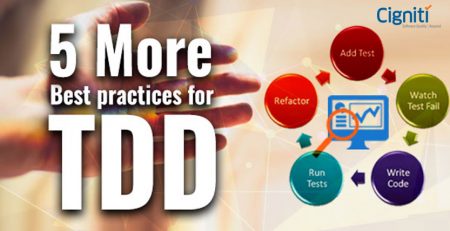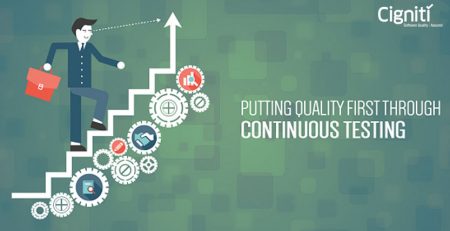Challenges of Implementing Continuous Integration (CI) at Scale
Precise adoption of automation techniques helps reduce manual processes, enforce consistency, pave way for early identification of issues within the SDLC and further helps to achieve continuous application delivery. In order to establish a Continuous Delivery environment, the most important requirement is the implementation of an automated Continuous Integration (CI) System. The CI process involves all stages – right from code commits to a version control system (done on the CI server) that serves as a kick off for a build to compile, run tests, and finally package the code.
CI is an integral part of an agile software development setup. For every sprint, the developer needs to deliver incremental features while focusing on the addition of new features and handling code errors that creep in and render the software unusable. To stop such errors from being integrated into the software configuration management (SCM), a CI server acts as a gatekeeper that helps keep a tab on code quality. A CI server performs an automated build that includes testing, reporting, and other actions each time the code base changes. The above activities are performed using different CI servers like Jenkins, Mojo, Hudson, QuickBuild, CruiseControl, Buildbot, etc. Some tools like Puppet and Chef can also help with scripting the provisioning of new environments and in creating additional CI server instances.
Some significant challenges while implementing an effective CI:
Absence of a Central Build Server: There is a necessity for some kind of source code management and some of the commonly used open source tools are Subversion, Git, etc. If you are not currently using version control in your development environment, then you should pay particular attention to repository layout and the subversion workflow along with proper tagging and branching.
Lack of Maintenance of Proper Version Control: At many times lack of maintenance of Version Control leads to variations and issues with software development. Primarily, a CI server checks for code changes in version control, and then downloads that code to the CI server to start off a build. The most common model of the CI server setup is the version control system that notes code changes on a
pre-configured interval. It is very important to maintain version in the development environment.
Lack of Proper Maintenance of Test Servers: If you are performing integration tests, you may also have a set of test servers in which you deploy built artifacts like WARs, JARs, and SARs, and execute your integration tests. Thus test servers play an important role in implementing CI.
Broken Builds: The goal is that the application must be ready to be built, packaged, and deployed on every committed change. It means that broken or untested code should never be committed. Moreover, a code that is production ready, should be managed by strict version control policies and the development team must practice agile development and unit testing, further leading to a better and CI environment.
Strict Organizational Policies: Certain organizations still follow rigid rules with certain internal policies wherein manual approvals and documentation is required before software is deployed into production. This might act in the way of successful CI implementation.
Other factors like the type of CI server plugins installed, the storage of credentials such that CI server can access the source version control can also impact the CI integrations. In order to attain CI, a perfect version control methodology needs to be followed along with taking up a build automation and dependency management strategy. Last but not the least in order to achieve the goal of continuous delivery, it is very important to draw a continuous integration methodology.
Top Continuous Integration Tools to Build Scalable CI
Jenkins: It is developed in Java and can be installed using the simple java command:
–jar Jenkins.war. It is mainly used for building and testing software projects continuously and monitoring externally run jobs. Jenkins supports a set of SCM tools like Git, Mercurial, Subversion, etc. You can also build through Apache Ant and Apache Maven based projects.
Buildbot: It is built based on twisted framework and a Python configuration script that needs to be provided to the master for Buildbot configuration. It is highly useful for mixed language applications or complex release tasks and allows installation to grow with your requirements.
Travis CI: This is one of the simplest CI server to get started, and is available as open source and free to host on your server. It is easy to link your Github account after providing relevant permissions.
Go: It helps distribute builds across different systems and monitor them all at one place. It is easy to perform regular tasks as they are added as pipelines.
Strider: It is written in Java and JavaScript and uses MongoDB as backing store. Strider is extremely customizable through plugins.
In conclusion, a CI approach is designed to effectively create an automation environment, ensuring that every change to the application results in a reliable version, and that any version can be built automatically with proper version control.
Get in touch with Cigniti’s Agile Test Specialists today.






Leave a Reply